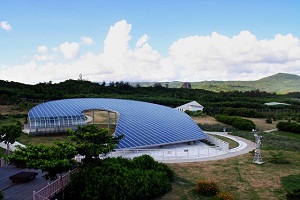Reviewing last week's solar energy news
 Last week’s solar news included a hodgepodge of headlines ranging from federal law, to industry advocacy, testing technologies and developing new technologies as well as new product introductions. It shows how widely the world of solar is growing these days.
Last week’s solar news included a hodgepodge of headlines ranging from federal law, to industry advocacy, testing technologies and developing new technologies as well as new product introductions. It shows how widely the world of solar is growing these days.
Despite falling module costs and lowered installation costs, the price of permitting solar installations at all levels have remained stagnant. Last Friday, three Senators—Bernie Sanders (I-Vt.), John Boozman (R-Ark.) and Jeff Bingaman (D-N.M.)—introduced the 10 Million Solar Roofs Bill of 2011, which would streamline the application and permitting process for homeowners and businesses. Sanders previously introduced such legislation, but the Department of Energy’s SunShot Initiative may make it more likely to pass this year.
The Solar Energy Industry Association (SEIA) hosted a discussion about diversifying the solar industry last week. The most familiar term in solar is photovoltaics, but other technologies like concentrated solar power (thermal) and concentrating photovoltaics are gaining ground. Each technology has advantages, which utilities must consider as they add more solar into their energy mix.
To better understand how each of these solar technologies work, Arizona Western College installed five separate 1-megawatt installations, each using a different type of solar technology. The technologies are being evaluated on how they operate under the same conditions. Among the technologies installed are SolFocus’ and GreenVolts concentrated photovoltaic technologies, Sharp’s thin-film, SolarWorld’s monocrystalline and Suntech’s polycrystalline silicon-based technologies.
The biggest deal in the solar industry—Total’s purchase of a majority stake of SunPower, Corp.—was delayed. Total, which recently reached an agreement with SunPower to purchase a 60 percent, $1.4 billion stake, in SunPower delayed the purchase until June 14. It said filings with the European Commission took longer than expected.
China’s emergence as a solar and renewable energy juggernaut, may stoke fears that other global players may lose ground to the country, which has plans to invest up to $1 trillion in clean energy by 2013. A seminar, “Making the ‘China Opportunity’ Real for Your Cleantech Business,” held last week, highlighted how U.S. companies could grow in the Chinese market.
The U.S. seems to be leading in developing solar-powered electric vehicle charging stations. General Electric’s Industrial Solutions unit unveiled a new solar-powered electric vehicle charging station in Connecticut that’s able to charge 13 electric vehicles a day and power station lights.
Strong renewable energy policy creates jobs. Perhaps that’s nowhere more evident than in Colorado where numerous solar, wind and other clean energy technology companies are locating facilities. The Metro Denver Economic Development Corp. determined that employment in the state’s clean technology sector grew by 32.7 percent between 2005 and 2010 to 19,000 employees. Despite being the 22nd most populous state, it is fourth in terms of how many people are employed in clean energy jobs.
On the new technology side, Case Western Reserve University researchers, last week announced that they were conducting new research into using iron-flow batteries to store excess solar power. The flow battery stores power in a different way than standard batteries do. Another technology, nantennas, gained some ground last week, as geometric diodes showed promise in converting visible sunlight into usable energy in a fundamentally different way than conventional photovoltaics.
Showcasing solar in high-profile places is helping bring solar to the masses. Last week, both the University of California (UC), Davis and the Seattle Seahawks announced such projects. UC Davis’ West Village neighborhood will be powered by a 4-megawatt photovoltaic array and be among the largest net-zero communities in the country, housing more than 2,000 students, faculty and staff. Qwest Field, home to the Seattle Seahawks, is installing 2.5 acres of Solyndra photovoltaics on the field’s adjacent event center.



